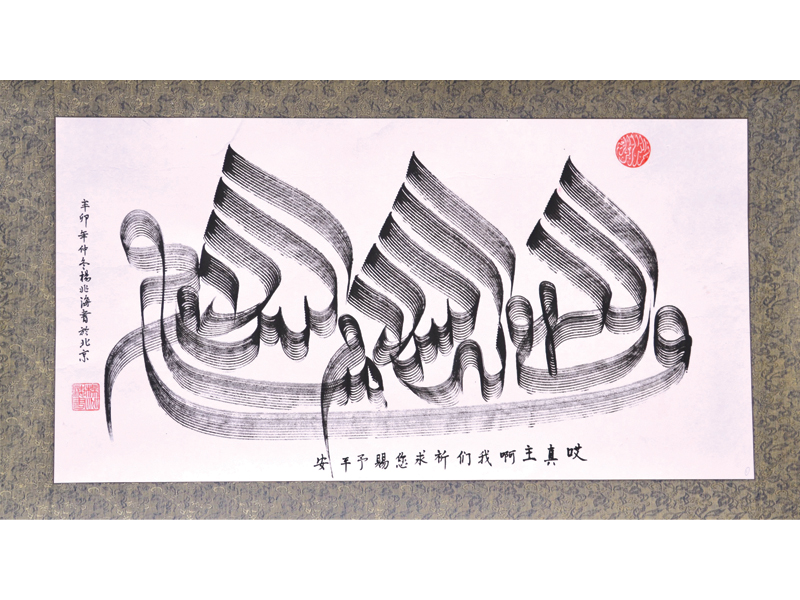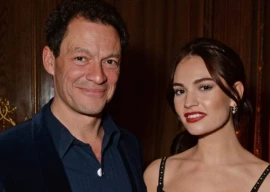
An exhibition showcasing Islamic calligraphy by Chinese artists will open at Gallery6 on today (Friday).
Titled “Revered calligraphy by Chinese,” the exhibition displays rare artworks from the collection of Asad Raza, who is a US-based collector and consultant on Islamic Arts. He has been collecting the artworks for the last three decades.
According to Raza, his several trips to China and networking opportunities with prominent calligraphers and Chinese Islamic forums enabled him to compile this collection.

Comprising a total of 27 calligraphic works, the exhibition showcases many art pieces by the leading Chinese Muslim calligrapher Haji Abdul Hakim, whose Chinese name is Haji Liu Jingyi.
Hakim, 85, chairs the Chifeng Islam Association and is the imam of the mosque of Chifeng. Being attracted to the art of calligraphy in childhood, he started studying Chinese calligraphy under the famous Chinese calligrapher Guo Zhenduo.
After acquiring a foundation in Chinese calligraphy techniques and skills, he later became attracted to Islamic calligraphy and became a student of the most famous Arabic calligraphers in the Eastern part of China, Imam Cao Jinzao
Hakim’s ability to learn the skills of calligraphic writing in Chinese and Arabic helped him to produce work that gained international appreciation.
He began his work by using the traditional Chinese method (i.e. the Chinese brush) to write Arabic calligraphy in the Sini style. But soon he started using the common reed pen and wooden spatula in his works also.
He writes Arabic calligraphy with a hint of typical Chinese style in the form of using the dry ink to maintain the flying white effect, while the harp semi triangular, clear cut tips of his vertical letters are indications of the use of the reed pen.
On the other hand, he uses a brush to write the Chinese translation of the text, along with his signature. Another hint of Chinese style is his use of the scroll and couplet format in his works, which is an indication of his early education in the Chinese calligraphic tradition.
He uses several well-established Chinese scripts in his writing, such as the rough and strong DaKai style, the rounder in form, plump and graceful Zhong kai style, and the Xiao kai style, which is smooth. On the other hand, he also uses a variety of standard Arabic calligraphic scripts in his work, including the Thulth and Diwani.
Commenting on the exhibition, Arjumand Faisel, curator of the gallery said, “Hakim, in his works uses Arabic calligraphy combined with the translation of the Arabic text into Chinese, which distinguishes and makes him different from most other Chinese Muslim calligraphers.”
The calligraphy frames vary in sizes from small to very large sizes and have silk borders in different colours - white, yellow, green and red.

In addition, the gallery is also displaying some rare lithographs from Islamic Arts. These include two reproductions of hand-coloured lithograph depicting the flooding of Haram Shareef in 1951 and efforts in handling the emergency, lithographs showing worshipers bowing down before the Almighty and offering namaz in 19th century, a miniature script in ‘Maghrebi’ script from the famous 17th century ‘Dalailul Khairat’, lithographs of Haj pilgrims approaching Mecca, by a Dutch lithographer, Marius Bauer, published in London in 1926.
The exhibition will continue till January 4 from 11am to 7pm.
Published in The Express Tribune, December 26th, 2014.
COMMENTS (1)
Comments are moderated and generally will be posted if they are on-topic and not abusive.
For more information, please see our Comments FAQ









































Very hopeful.
To learn more arabic calligraphy by practice & print I'm using the online tool eMashq.com